 W
WGoogle Ads is an online advertising platform developed by Google, where advertisers bid to display brief advertisements, service offerings, product listings, or videos to web users. It can place ads both in the results of search engines like Google Search and on non-search websites, mobile apps, and videos. Services are offered under a pay-per-click (PPC) pricing model.
 W
WGoogle Ads is an online advertising platform developed by Google, where advertisers bid to display brief advertisements, service offerings, product listings, or videos to web users. It can place ads both in the results of search engines like Google Search and on non-search websites, mobile apps, and videos. Services are offered under a pay-per-click (PPC) pricing model.
 W
WGoogle Ads is an online advertising platform developed by Google, where advertisers bid to display brief advertisements, service offerings, product listings, or videos to web users. It can place ads both in the results of search engines like Google Search and on non-search websites, mobile apps, and videos. Services are offered under a pay-per-click (PPC) pricing model.
 W
WGoogle Analytics is a web analytics service offered by Google that tracks and reports website traffic, currently as a platform inside the Google Marketing Platform brand. Google launched the service in November 2005 after acquiring Urchin.
 W
WAndroid Cloud to Device Messaging, or C2DM, is a defunct mobile notification service that was developed by Google and replaced by the Google Cloud Messaging service. It enabled developers to send data from servers to Android applications and Chrome extensions. C2DM originally launched in 2010 and was available beginning with version 2.2 of Android. On June 27, 2012, Google unveiled the Google Cloud Messaging service aimed at replacing C2DM, citing improvements to authentication and delivery, new API endpoints and messaging parameters, and the removal of API rate limits and maximum message sizes. Google announced official deprecation of the C2DM service in August 2012, and released documentation to assist developers with migrating to the new service. The C2DM service was discontinued for existing applications and completely shut down on October 20, 2015.
 W
WMIT App Inventor is a web application integrated development environment originally provided by Google, and now maintained by the Massachusetts Institute of Technology (MIT). It allows newcomers to computer programming to create application software(apps) for two operating systems (OS): Android, and iOS, which, as of 8 July 2019, is in final beta testing. It is free and open-source software released under dual licensing: a Creative Commons Attribution ShareAlike 3.0 Unported license, and an Apache License 2.0 for the source code.
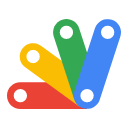 W
WApps Script is a scripting platform developed by Google for light-weight application development in the Google Workspace platform. Google Apps Script was initially developed by Mike Harm as a side project while working as a developer on Google Sheets. Google Apps Script was first publicly announced in May 2009 when a beta testing program was announced by Jonathan Rochelle, then Product Manager, Google Docs. In August 2009 Google Apps Script was subsequently made available to all Google Apps Premier and Education Edition customers. It is based on JavaScript 1.6, but also includes some portions of 1.7 and 1.8 and a subset of the ECMAScript 5 API. Apps Script projects run server-side on Google's infrastructure. According to Google, Apps Script "provides easy ways to automate tasks across Google products and third party services." Apps Script is also the tool that powers the add-ons for Google Docs, Sheets and Slides.
 W
WGoogle Arts & Culture is an online platform of high-resolution images and videos of artworks and cultural artifacts from partner cultural organizations throughout the world.
 W
WGoogle Bookmarks is a discontinued online bookmarking service from Google. It was completely separate from browser-based bookmarking and should not be confused with the Bookmarks function on any popular browser, Google Chrome included. Google Bookmarks was launched on October 10, 2005. It is a cloud-based service that allows users to bookmark webpages and add labels or notes. The service never became widely adopted by Google users.
 W
WGoogle Books is a service from Google Inc. that searches the full text of books and magazines that Google has scanned, converted to text using optical character recognition (OCR), and stored in its digital database. Books are provided either by publishers and authors through the Google Books Partner Program, or by Google's library partners through the Library Project. Additionally, Google has partnered with a number of magazine publishers to digitize their archives.
 W
WGoogle Calendar is a time-management and scheduling calendar service developed by Google. It became available in beta release April 13, 2006, and in general release in July 2009, on the web and as mobile apps for the Android and iOS platforms.
 W
WThe Chrome Web Store is Google's online store for its Chrome web browser. As of 2019, The Chrome Web Store hosts about 190,000 extensions and web apps.
 W
WGoogle Contacts is Google's contact management tool that is available in its free email service Gmail, as a standalone service, and as a part of Google's business-oriented suite of web apps Google Workspace.
 W
WThe Google Data Liberation Front is an engineering team at Google whose "goal is to make it easier for users to move their data in and out of Google products." The team, which consults with other engineering teams within Google on how to "liberate" Google products, currently supports 27 products. The purpose of the Data Liberation Front is to ensure that data can be migrated from Google once an individual or company stops using their services.
 W
WGoogle Dictionary is an online dictionary service of Google that can be accessed by using the "define" operator and other similar phrases in Google Search. It is also available in Google Translate and in the form of an extension for Google Chrome. The dictionary content is licensed from Oxford University Press's OxfordDictionaries.com. It is available in different languages such as English, Spanish and French. The service also contains pronunciation audio, Google Translate, word origin chart, Ngram Viewer, and word games among other features for the English-language version. Originally available as a standalone service it was integrated into Google Search with the separate service being discontinued in August 2011.
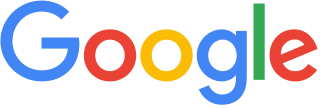 W
WGoogle Finance is a website focusing on business news and financial information hosted by Google.
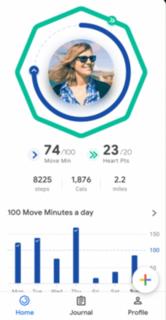 W
WGoogle Fit is a health-tracking platform developed by Google for the Android operating system, Wear OS and Apple Inc.'s iOS. It is a single set of APIs that blends data from multiple apps and devices. Google Fit uses sensors in a user's activity tracker or mobile device to record physical fitness activities, which are measured against the user's fitness goals to provide a comprehensive view of their fitness.
 W
WGoogle Flights is an online flight booking search service which facilitates the purchase of airline tickets through third-party suppliers. It was launched by Google in 2011 following a buyout. It is now part of Google Travel.
 W
WGoogle Fonts is a font embedding service library. This includes free and open source font families, an interactive web directory for browsing the library, and APIs for using the fonts via CSS and Android. Popular fonts in the Google Fonts library include Roboto, Open Sans, Lato, Oswald, Montserrat, Source Sans Pro, and Raleway.
 W
WGoogle Fusion Tables was a web service provided by Google for data management. Fusion tables can be used for gathering, visualising and sharing data tables. Data are stored in multiple tables that Internet users can view and download.
 W
WGmail is a free email service provided by Google. As of 2019, it had 1.5 billion active users worldwide. A user typically accesses Gmail in a web browser or the official mobile app. Google also supports the use of email clients via the POP and IMAP protocols.
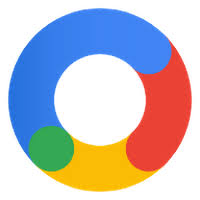 W
WGoogle Marketing Platform is an online advertising and analytics platform developed by Google and launched in July 24, 2018. It unifies DoubleClick's advertising services and Google's own advertising and analytics services. Google Marketing Platform is mainly used by big advertisers to buy ads on Internet.
 W
WGoogle IME, also known as Google Input Tools, is a set of input method editors by Google for 22 languages, including Amharic, Arabic, Bengali, Chinese, Greek, Gujarati, Hindi, Japanese, Kannada, Malayalam, Marathi, Nepali, Persian, Punjabi, Russian, Sanskrit, Serbian, Tamil, Telugu, Tigrinya, and Urdu. It is a virtual keyboard that allows users to type in their local language text directly in any application without the hassle of copying and pasting.
 W
WGoogle Ads is an online advertising platform developed by Google, where advertisers bid to display brief advertisements, service offerings, product listings, or videos to web users. It can place ads both in the results of search engines like Google Search and on non-search websites, mobile apps, and videos. Services are offered under a pay-per-click (PPC) pricing model.
 W
WGoogle Map Maker was a map editing service launched by Google in June 2008. In geographies where it is hard to find providers of good map data, user contributions were used to increase map quality. Changes to Google Map Maker were intended to appear on Google Maps only after sufficient review by Google moderators. Google Map Maker was used at Google Mapathon events held annually.
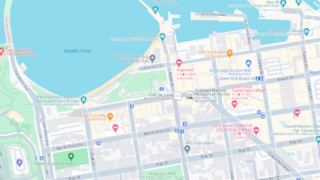 W
WGoogle Maps is a web mapping platform and consumer application offered by Google. It offers satellite imagery, aerial photography, street maps, 360° interactive panoramic views of streets, real-time traffic conditions, and route planning for traveling by foot, car, air and public transportation. As of 2020, Google Maps was being used by over 1 billion people every month around the world.
 W
WGoogle Earth is a computer program, formerly known as Keyhole EarthViewer, that renders a 3D representation of Earth based primarily on satellite imagery. The program maps the Earth by superimposing satellite images, aerial photography, and GIS data onto a 3D globe, allowing users to see cities and landscapes from various angles. Users can explore the globe by entering addresses and coordinates, or by using a keyboard or mouse. The program can also be downloaded on a smartphone or tablet, using a touch screen or stylus to navigate. Users may use the program to add their own data using Keyhole Markup Language and upload them through various sources, such as forums or blogs. Google Earth is able to show various kinds of images overlaid on the surface of the earth and is also a Web Map Service client. Recently Google has revealed that Google Earth now covers more than 98 percent of the world, and has captured 10 million miles of Street View imagery, a distance that could circle the globe more than 400 times.
 W
WGoogle News is a news aggregator service developed by Google. It presents a continuous flow of links to articles organized from thousands of publishers and magazines. Google News is available as an app on Android, iOS, and the Web.
 W
WGoogle Opinion Rewards is a rewards-based program developed by Google. It was initially launched as a survey mobile app for Android and iOS developed by Google. The app allows users to answer surveys and earn rewards. On Android, users earn Google Play credits which can be redeemed by buying paid apps from Google Play. On iOS, users are paid via PayPal. Users in the available countries who are over 18 years old are eligible. Google Opinion Rewards works with Google Surveys, market researchers make the survey through Google Surveys and answers are received through Google Opinion Rewards by app users. This process provides surveyors with a large pool of surveyees quickly. This "fast and easy" surveying process has been criticized due to contention over the validity of results as well as concern over the privacy and security of the app users' data.
 W
WGoogle Pay is a digital wallet platform and online payment system developed by Google to power in-app, online, and in-person contactless purchases on mobile devices, enabling users to make payments with Android phones, tablets, or watches. Users in the United States and India can also use an iOS device, albeit with limited functionality. In addition to this, the service also supports passes such as coupons, boarding passes, campus ID cards, car keys, event tickets, movie tickets, public transportation tickets, store cards, and loyalty cards.
 W
WGoogle Person Finder is an open source web application that provides a registry and message board for survivors, family, and loved ones affected by a natural disaster to post and search for information about each other's status and whereabouts. It was created by volunteer Google engineers in response to the 2010 Haiti earthquake.
 W
WGoogle Play Pass is an app subscription service by Google for Android devices. It was launched on September 23, 2019 in the United States. In July 2020, the service launched as planned in other Western countries, including Germany, Australia, and Canada. Subscribers can access the included apps and games without ads and in-app purchases for a monthly or yearly subscription. There are over 460 curated titles available under the service, which range from puzzles to podcasts.
 W
WGoogle Plugin for Eclipse (GPE) was a set of development tools that enabled Java developers to design, build, optimize, and deploy cloud computing applications. developers in creating complex user interfaces, generating Ajax code using the GWT Web Toolkit, and deploying applications to Google App Engine. GPE installed into the Eclipse integrated development environment (IDE) using the extensible plugin system. GPE was available under the Eclipse Public License 1.0.
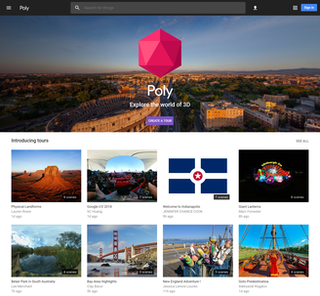 W
WPoly was a website created by Google for users to browse, distribute, and download 3D objects. It was intended to allow creators to easily share and access 3D objects. It featured a free library containing thousands of 3D objects for use in virtual reality and augmented reality applications. On December 2, 2020, it was announced that Poly would be shutting down on June 30, 2021, with the ability to upload 3D models to be suspended on the April 30, 2021.
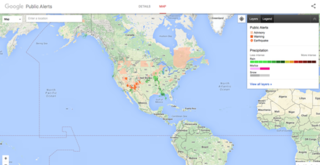 W
WGoogle Public Alerts was an online notification service owned by Google.org that sends safety alerts to the United States, Australia, Canada, Colombia, Japan, Taiwan, Indonesia, Mexico, and Brazil launched on October 30, 2012. And to the Philippines on November 12, 2014. It is part of the Google Crisis Response team and publishes content from its partners of each country. If you activate Google Now, you can see suitable weather and public safety on Google Search and Google Maps.
 W
WGoogle Public Data Explorer provides public data and forecasts from a range of international organizations and academic institutions including the World Bank, OECD, Eurostat and the University of Denver. These can be displayed as line graphs, bar graphs, cross sectional plots or on maps. The product was launched on March 8, 2010 as an experimental visualization tool in Google Labs.
 W
WGoogle Ads is an online advertising platform developed by Google, where advertisers bid to display brief advertisements, service offerings, product listings, or videos to web users. It can place ads both in the results of search engines like Google Search and on non-search websites, mobile apps, and videos. Services are offered under a pay-per-click (PPC) pricing model.
 W
WGoogle Safe Browsing is a blacklist service provided by Google that provides lists of URLs for web resources that contain malware or phishing content. The Google Chrome, Safari, Firefox, Vivaldi, and GNOME Web browsers use the lists from the Google Safe Browsing service for checking pages against potential threats. Google also provides a public API for the service.
Google Scholar is a freely accessible web search engine that indexes the full text or metadata of scholarly literature across an array of publishing formats and disciplines. Released in beta in November 2004, the Google Scholar index includes most peer-reviewed online academic journals and books, conference papers, theses and dissertations, preprints, abstracts, technical reports, and other scholarly literature, including court opinions and patents. Google Scholar uses a web crawler, or web robot, to identify files for inclusion in the search results. For content to be indexed in Google Scholar, it must meet certain specified criteria. An earlier statistical estimate published in PLOS ONE using a Mark and recapture method estimated approximately 80–90% coverage of all articles published in English with an estimate of 100 million. This estimate also determined how many documents were freely available on the internet.
 W
WGoogle Search, is a search engine provided by Google. Handling over 3.5 billion searches per day, it has a 92% share of the global search engine market. It is also the most-visited website in the world.
 W
WGoogle Sites is a structured wiki and web page creation tool included as part of the free, web-based Google Docs Editors suite offered by Google. The service also includes Google Docs, Google Sheets, Google Slides, Google Drawings, Google Forms, and Google Keep. Google Sites is only available as a web application. The app allows users to create and edit files online while collaborating with other users in real-time.
 W
WGoogle Earth is a computer program, formerly known as Keyhole EarthViewer, that renders a 3D representation of Earth based primarily on satellite imagery. The program maps the Earth by superimposing satellite images, aerial photography, and GIS data onto a 3D globe, allowing users to see cities and landscapes from various angles. Users can explore the globe by entering addresses and coordinates, or by using a keyboard or mouse. The program can also be downloaded on a smartphone or tablet, using a touch screen or stylus to navigate. Users may use the program to add their own data using Keyhole Markup Language and upload them through various sources, such as forums or blogs. Google Earth is able to show various kinds of images overlaid on the surface of the earth and is also a Web Map Service client. Recently Google has revealed that Google Earth now covers more than 98 percent of the world, and has captured 10 million miles of Street View imagery, a distance that could circle the globe more than 400 times.
 W
WSocratic is an education tech company that offers a mobile app for students. The app uses AI technology to help students with their homework by providing educational resources like videos, definitions, Q&A, links and more.
 W
WStadia is a cloud gaming service developed and operated by Google. It is advertised to be capable of streaming video games to players up to 4K resolution at 60 frames per second with support for high-dynamic-range (HDR) via the company's numerous data centers. It is accessible through Chromecast Ultra and Android TV devices, the Google Chrome web browser on personal computers as well as other Chromium-based browsers, the Stadia mobile app on supported Android smartphones, and Chrome OS tablets. There is also an experimental mode with support for all Android devices capable of installing the Stadia mobile app. In December 2020, Google released an iOS browser-based progressive web application for Stadia, enabling gameplay in the Safari browser.
 W
WGoogle Street View is a technology featured in Google Maps and Google Earth that provides interactive panoramas from positions along many streets in the world. It was launched in 2007 in several cities in the United States, and has since expanded to include cities and rural areas worldwide. Streets with Street View imagery available are shown as blue lines on Google Maps.
 W
WGoogle Surveys is a business product by Google that facilitates customized market research. The product was designed by Google as an alternative to internet pay walls for websites that publish content. The program was launched by several online publishers such as Pandora, AdWeek, and the New York Daily News.
 W
WGoogle Text-to-Speech is a screen reader application developed by Google for the Android operating system. It powers applications to read aloud (speak) the text on the screen with support for many languages. Text-to-Speech may be used by apps such as Google Play Books for reading books aloud, by Google Translate for reading aloud translations providing useful insight to the pronunciation of words, by Google Talkback and other spoken feedback accessibility-based applications, as well as by third-party apps. Users must install voice data for each language.
 W
WGoogle Translate is a multilingual neural machine translation service developed by Google, to translate text, documents and websites from one language into another. It offers a website interface, a mobile app for Android and iOS, and an application programming interface that helps developers build browser extensions and software applications. As of October 2021, Google Translate supports 109 languages at various levels and as of April 2016, claimed over 500 million total users, with more than 100 billion words translated daily.
 W
WGoogle Search, is a search engine provided by Google. Handling over 3.5 billion searches per day, it has a 92% share of the global search engine market. It is also the most-visited website in the world.
 W
WWhat Do You Love (WDYL) was a metasearch engine from Google. The main purpose of WDYL is to get more of what you love by searching across numerous Google products with one click. The search is censored with search words deemed inappropriate by Google resulting in the user being redirected to the WDYL page for kittens with an image of a rainbow in the background. The service is now inactive, with the URL resulting in a 404 response.
 W
WWear OS is a version of Google's Android operating system designed for smartwatches and other wearables. By pairing with mobile phones running Android version 6.0 or newer, or iOS version 10.0 or newer with limited support from Google's pairing application, Wear OS integrates Google Assistant technology and mobile notifications into a smartwatch form factor.
 W
WGoogle WiFi is a municipal wireless network deployed in Mountain View, California. It is entirely funded by Google and installed primarily on Mountain View lightposts. Google had committed to keeping the service free until 2010. The initial service was shut down by Google on May 3, 2014 at their Mountain View base, and provided a new public outdoor WiFi.
 W
WYouTube is an American online video sharing and social media platform owned by Google. It was launched in February 2005 by Steve Chen, Chad Hurley, and Jawed Karim. It is the second most visited website, with more than one billion monthly users who collectively watch more than one billion hours of videos each day. As of May 2019, videos were being uploaded at a rate of more than 500 hours of content per minute.